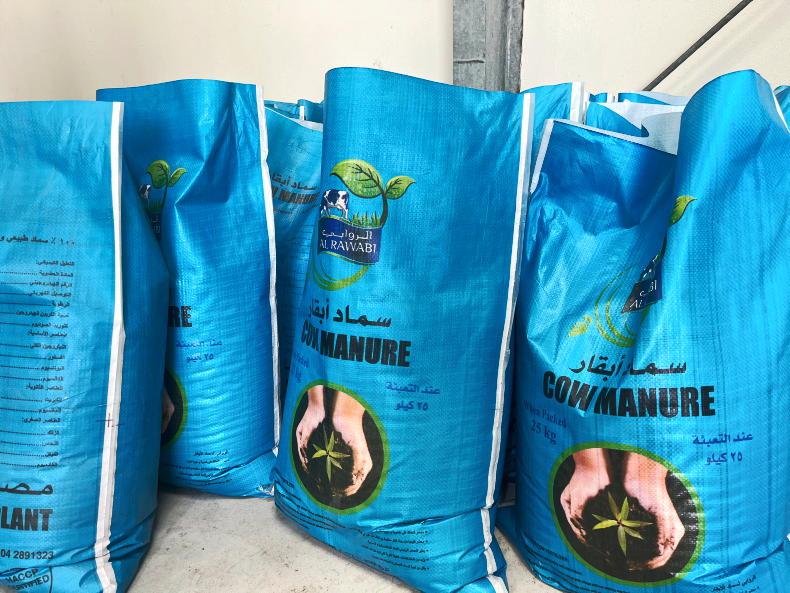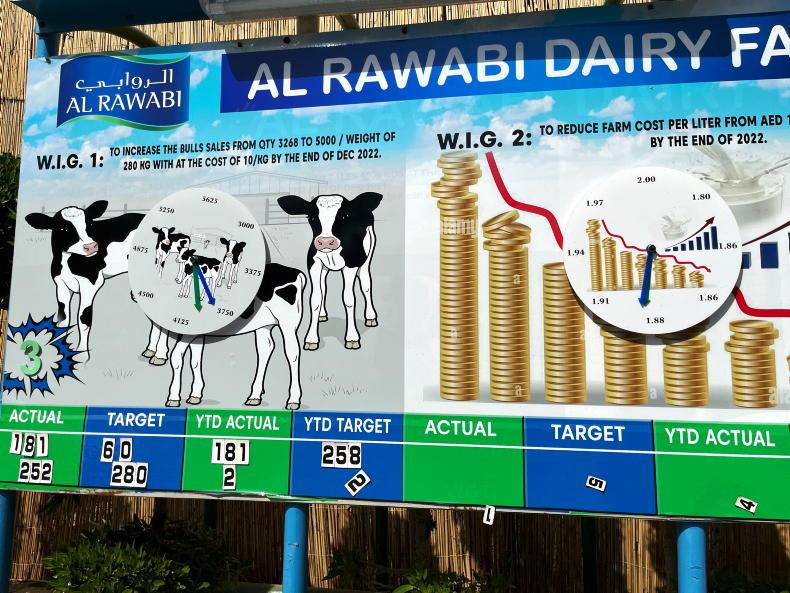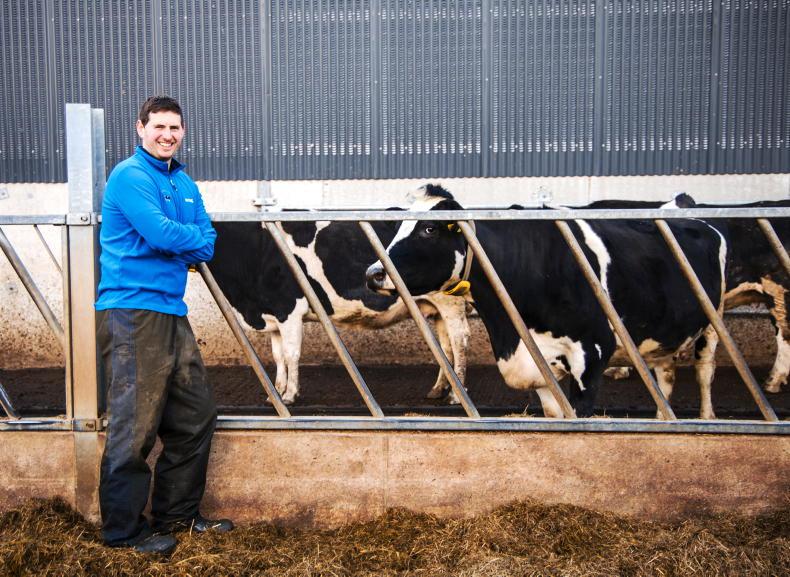Al Rawabi dairy farm runs 17,500 cattle, including 9,500 cows milking year-round, on 168ha with 350 staff in the desert 45 minutes outside Dubai, United Arab Emirates (UAE).
The farm started in 1985 with 500 cows imported from Holland and having reached a production limit within its current site, it’s now doubling in size with a further 200ha block under development two hours away in Abu Dhabi.
Farm manager Ayman Salah Boshara attributes the farm’s success to its “computerised system”, a lack of government subsidies which enable him to always “think outside the box” and his refusal to hire “donkey workers”.
The Irish Farmers Journal visited Al Rawabi last month as part of Bord Bia’s trade mission to the Middle East.
Herd
Al Rawabi runs 9,500 milking cows and a further 8,000 young animals and replacement heifers. Separately, it runs a fattening farm, predominantly focusing on Angus beef for the local market.
All dairy animals are of Holstein breeding, with animals or genetics imported from Holland and Germany since the 1980s.
However, this importation has been reduced to genetics only in recent years, as cattle born in and accustomed to the desert perform better, according to Boshara.
The farm manager said: “We avoid any American cow because they are prone to mastitis disease, but Dutch and German cows for us are the best. Australian cows are crazy and they are not friendly. They are not producing that much milk.”
He said cows from Holland milk “more” and that their docility makes them easier to work with.
Boshara said that everything in relation to herd management is put through a “computerised system”.
“Every cow has a chip and an electronic ID system. We can get every cow the [disease] protection she needs, the heat detection on time, the location of the cows and number of the cows, and what is the right time to make her pregnant.”
Milking
All cows are milked three times a day, with a 24/7, 365-days-a-year milking system in place. Al Rawabi staff work seven-hour milking shifts, with one hour of clean up. The farm holdsthree, herringbone parlours.
Boshara said that with each additional milking, disease protection is increased by about 7% and “you will reduce the mastitis as well”.
The herd’s average milk yield is 11,500 litres per cow per year or 35 litres per cow per day at 3.6% fat.
Boshara noted that it is “very challenging” to achieve the farm's production levels due to the climate conditions.
9,500 cows are milked 3 times a day in 3 parlours running 24/7
— Irish Farmers Journal (@farmersjournal) February 15, 2022
Farm managers say infection risk reduces by 7% in each cow with each additional daily milking @Bordbia @FJDairy pic.twitter.com/DDw5FcMl4H
The farm receives an average price equivalent to 30c/l after it processes three products from its raw milk. These include low fat, full fat and double cream milk, as well as some dried product.
Al Rawabi is also working towards producing two different types of milk through “natural genetic selection”. These are “A1 milk”, which Boshara described as “normal milk”, and A2, which is free of lactose. Product is marketed to the UAE, Oman and Sudan.
The average number of lactations for the herd sits at 2.8, with Boshara saying “not even the best farmers can give you higher than that”. The average lactation per cow in Ireland sits between five and six.
Cows are culled in Al Rawbai at an average of five to six years of age and fattened for the beef trade.
“To keep the cow after fifth lactation is useless because the milk graph is starting from first lactation and levels off after the fifth,” he said.
Calving
Calving occurs in Al Rawabi predominantly from September to March, with the hottest summer months of April to August avoided, as cow feed intake will be reduced at this time, affecting milk yield.
Cows close to calving are grouped in a specialised pen and fed a “close-up” ration, with up to 50 cows calving on some of the farm’s busiest days.
The Irish Farmers Journal observed a pen of 10 freshly born calves. Once calves have received colostrum and navel care, they’re moved to individual pens, all held under cover and showered with mist to protect the animals from the hottest daytime temperatures.

Boshara described how calves are fed a high-quality, 26% protein calf milk replacer, which the farm imports from New Zealand. They are then weaned at 55 days of age.
He said that other farms use cheaper milk replacer, which affects the calf’s daily weight gain and claims Al Rawabi achieves the same 90-day weights as others who wean much later.
“Whenever the calf has good daily weight gain, it will reflect when we’re milking the cow. The animal will produce more milk and, also, it will reduce operation costs.”
Breeding
There are no breeding bulls on the farm with a system of carefully studied breed sires, sexed semen and artificial insemination (AI) used instead. There is an on-farm laboratory, equipped with deep freezers and microscopes for semen and embryo inspection.
Heifer calves undergo genomic testing at seven days of age and this enables farm technicians to “make an economic decision” on whether she will be kept as a replacement.
Boshara said: “From seven days of age, we make the decision to keep her or to move her to fattening.”
Heifers are bred once they reach 320kg, typically at 13 months of age.
— Irish Farmers Journal (@farmersjournal) February 15, 2022
High level of heifers used as recipients for embryos flushed from most productive mature cows.
Breeding all traced to imported stock from Holland @BordBiaME @FJDairy pic.twitter.com/AgSW00fI7M
When asked at what stage replacements are bred at, he said: “We care about the height and weight. Height is 132cm, weight is 350kg and above. They calve at 24 months, but breeding is [at] 13 to 14 months.”
Feeding
All feed on the farm is imported from outside the UAE, as with the desert climate “we cannot grow forage”, according to Boshara.
Imports, which cost an average of $3m per month, come from Argentina, Brazil and the US. The farm also imports alfalfa from South Africa and Sudan.
Boshara described feed imports as “very expensive” due to “logistical challenges” during the COVID-19 pandemic. He said he has been paying more than $400/t for corn and $450/t for alfalfa hay, including all costs for delivery to the farm gate.
Dry matter intake for the milking pen is 26kg per cow per day. There are 14 ration mixes used on the farm, including recipes for the freshly calved cow (up to 25 post-calving), “high” cows (for the first 150 days of lactation), “medium” cows, “low” (for progression to drying off), dry cows and close up (for 21 days before due date).
Breeding heifers are fed four different recipes throughout their development and are given a pellet starter before weaning.
Beef
Angus and Friesian bulls and non-breeding heifer calves are moved to Al Rawabi’s fattening farm after weaning.
Boshara described how these receive feeding ad lib for eight months and are then slaughtered at a weight of 300kg. The beef is marketed to the local UAE market.
Mortality for those brought through the fattening system is 2% to 3% from birth, with heifer replacement mortality averaging 5%. Boshara claims that 10% mortality would be the average for the sector.
He said that the farm uses “liquid lactic acid bacteria” to reduce disease, flies and smell. The only vaccinations used on the farm are for preventing foot and mouth.
“We spread it in the bedding of the cow shed. It decreases the pH to below five. So, the bad bacteria which would be causing the mastitis, foot rot, lameness, they cannot live in the lower pH.”
Embryo transfer
Al Rawabi also runs a programme of embryo transfer (ET) for its highly productive cows. Eight embryos are flushed from three cows on any given day, providing around 24 for the team to work with.
The recipient animals are always heifers on their first breeding cycle. Boshara described how these heifers become the “carrier for the high genetic [calf]” and have a conception rate of 65%.
“We improve our farm by vertical expansion, not horizontal, meaning we improve the genetics. We don’t care about the number of animals.”
Non-sexed Angus semen is used on cows that need a second service and what Boshara described as the “useless” animals, because it increases conception and shortens gestation.
Environment
On the farm’s impact on the environment, Boshara said that “everything is recycled” and noted that if the farm didn’t recycle, he could not reduce costs.
He demonstrated the farm’s innovation in generating renewable energy and reducing water waste.

“We have a waste water plant. We treat everything and then we send it to ultra-filtration. We recycle [this water] for the cow cooling system.”
Manure is dragged into the open from under the covered part of cow pens where it dries. It is then scraped and brought to the farm’s biogas plant where Al Rawabi produces 1.3 megawatts of electricity per hour or, alternatively, the gas is used to heat water.
Gas is also used to run the farm’s gas engine trucks. The waste manure, after the biogas generation, is further filtered, bagged and sold as a high-nutrient compost to the local market.
Staff
Al Rawabi employs 350 staff, with Boshara stating that no men over 30 years of age or any women at all are hired as labourers.
A full-time calver and a team of four vets are also employed on farm, none of which can be over 40 years of age.
Living quarters, a canteen and badminton court are provided for staff on site.
On the career opportunities for his staff, Boshara said: “My advice to you when you hire a labourer for milking cows [is] don’t hire the donkey people. Hire the people with the basic knowledge of computers and English.”
He said that once a labourer joins the farm, they continue training and progression.
“All my people, the people who are studying the health, [they] started as a milker [labourer], so you can encourage them to be a good technical team.
“If you bring [in] civilian people, they will not stay with you long and they will not be loyal to you. They will run away from you for any opportunity [to go to another] company.”
Boshara did not comment when asked about the salary farm workers receive.
Subsidies
Al Rawabi dairy farm receives “zero government supports”, according to Boshara. However, he revealed that the UAE government owns a 30% share in the farm.
“Nobody is supporting us and, to be honest, I love to work without subsidies, because if you work with subsidies, you will never think outside the box. It is in your brain [that the] subsidy is there.
“If they remove the subsidy from you, then you will run and make innovation, re-engineering and [you’ll be] thinking always outside the box.”

Al Rawabi has recently purchased 200ha of new land in Abu Dhabi, which will become the farm’s second branch.
Boshara said his team will start with 10,000 cows and they will plan to increase this every year by 10% until the unit reaches capacity. Stock will be imported from Holland for the initial set-up.










SHARING OPTIONS